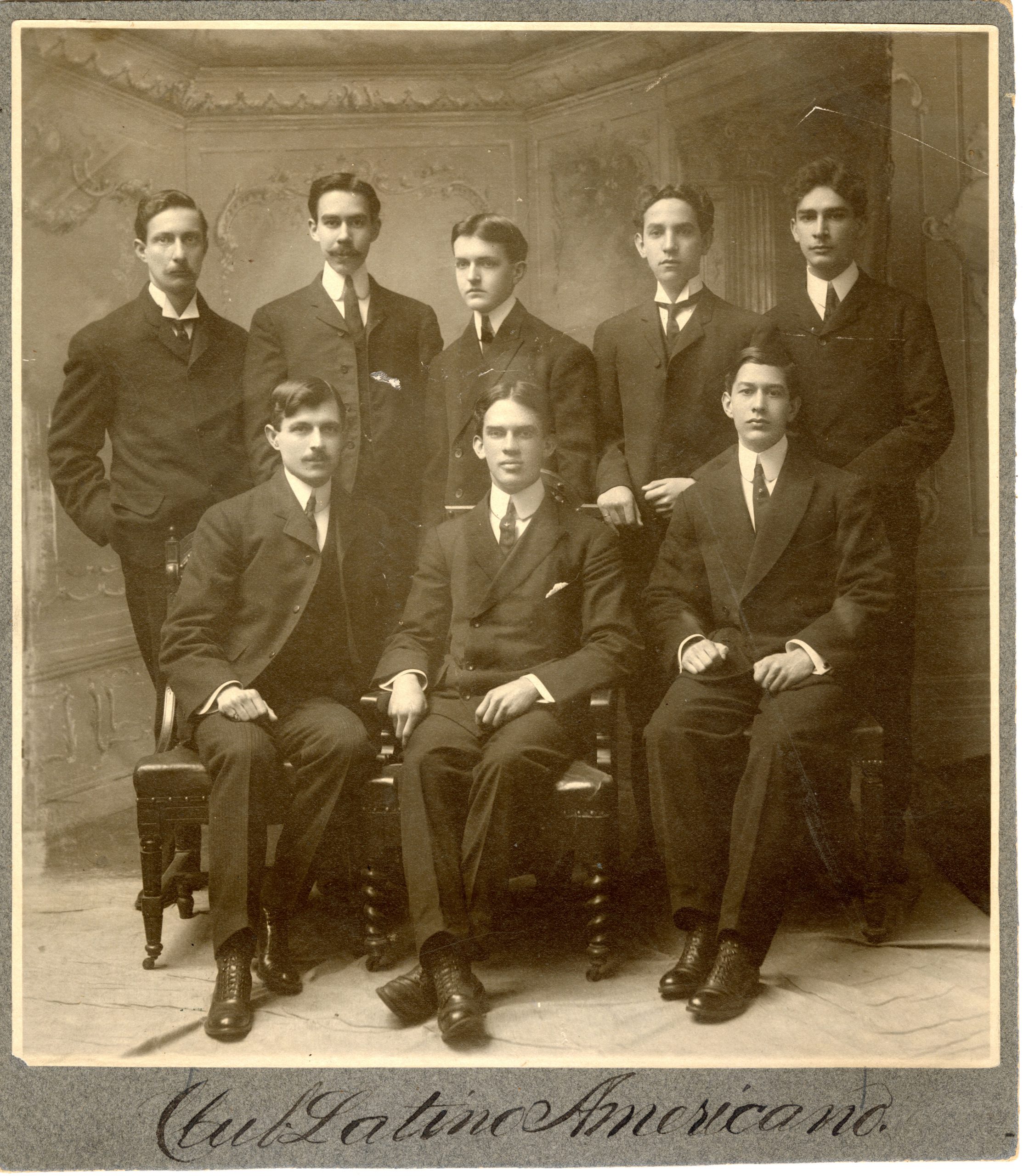 In celebration of Hispanic Heritage Month, historical collections highlights Club Latino-Americano, an organization created to support early Latin American students at the University of Maryland. The first student to graduate from countries we associate with Hispanic culture was Jose Raphael Espin in 1856. Espin was from Cuba and graduated from the School of Medicine. Following this first graduate, the schools associated with the University of Maryland saw a steady stream of students from Cuba and Puerto Rico, as well as other Latin- and South-American countries.
In celebration of Hispanic Heritage Month, historical collections highlights Club Latino-Americano, an organization created to support early Latin American students at the University of Maryland. The first student to graduate from countries we associate with Hispanic culture was Jose Raphael Espin in 1856. Espin was from Cuba and graduated from the School of Medicine. Following this first graduate, the schools associated with the University of Maryland saw a steady stream of students from Cuba and Puerto Rico, as well as other Latin- and South-American countries.
According to the 1912 Terra Mariae Yearbook, six students from Cuba and Puerto Rico came together to form the Latin Society of the University of Maryland in 1867. The organization brought together students from all schools of the University with, “The purposes of mutual assistance and advancement of their fellow countrymen engaged in studying the several branches of learning that this University offers. Also to further spread the knowledge of the advantages this school affords to students among other Latin Americans who are contemplating the study of any one or more of the professions taught at the colleges in Baltimore.” The organization’s name was eventually changed to Club Latino-Americano or the Latin-American Club.
Sadly after the initial interest in 1867, despite the surprising number of Latin-American students at the University, membership in the organization dwindled. However, interest was renewed somewhere around 1911. By 1913 there were 35 student members and several hundred alumni members of the organization spreading the word about the University of Maryland throughout Latin America. A 1914 article in The Hospital Bulletin suggested this renewed interest was due to the increase in Spanish-speaking students at the University following the Spanish-American War of 1898. The organization allowed students to feel connected to home while several hundred miles away. It provided support and an avenue for social engagements including an annual banquet.
After the boom of membership in the 1910s, the organization once again faded by the early 1920s and disappears from the yearbooks and bulletins by that time. Yet students from Latin and South America continued to matriculate and graduate from the University, suggesting that the club’s recruitment efforts were successful long after it disbanded.
References and Further Reading:
- Club Latino-Americano, Bones, Molars, and Briefs Yearbook, 1904: https://archive.org/details/bonesmolarsbrief1904univ/page/120/mode/2up
- Club Latino-Americano (University), Old Maryland, January 1905: https://archive.org/details/oldmaryland0102unse/page/n15/mode/1up
- Latin-American Club, Terra Mariae Yearbook, 1912: https://archive.org/details/terramariae1912univ/page/304/mode/2up
- Club Latino-Americano, 1913, Old Maryland, January 1913: https://archive.org/details/oldmaryland0910unse/page/n11/mode/1up
- Club Latino-Americano, Terra Mariae Yearbook, 1913: https://archive.org/details/terramariae1913univ/page/288/mode/2up
- Club Latino-Americano, Terra Mariae Yearbook, 1914: https://archive.org/details/terramariae1914univ/page/354/mode/2up
- The Club Latino-Americano., The Hospital Bulletin, May 15, 1914: https://archive.org/details/hospitalbulletin10unse/page/48/mode/2up

